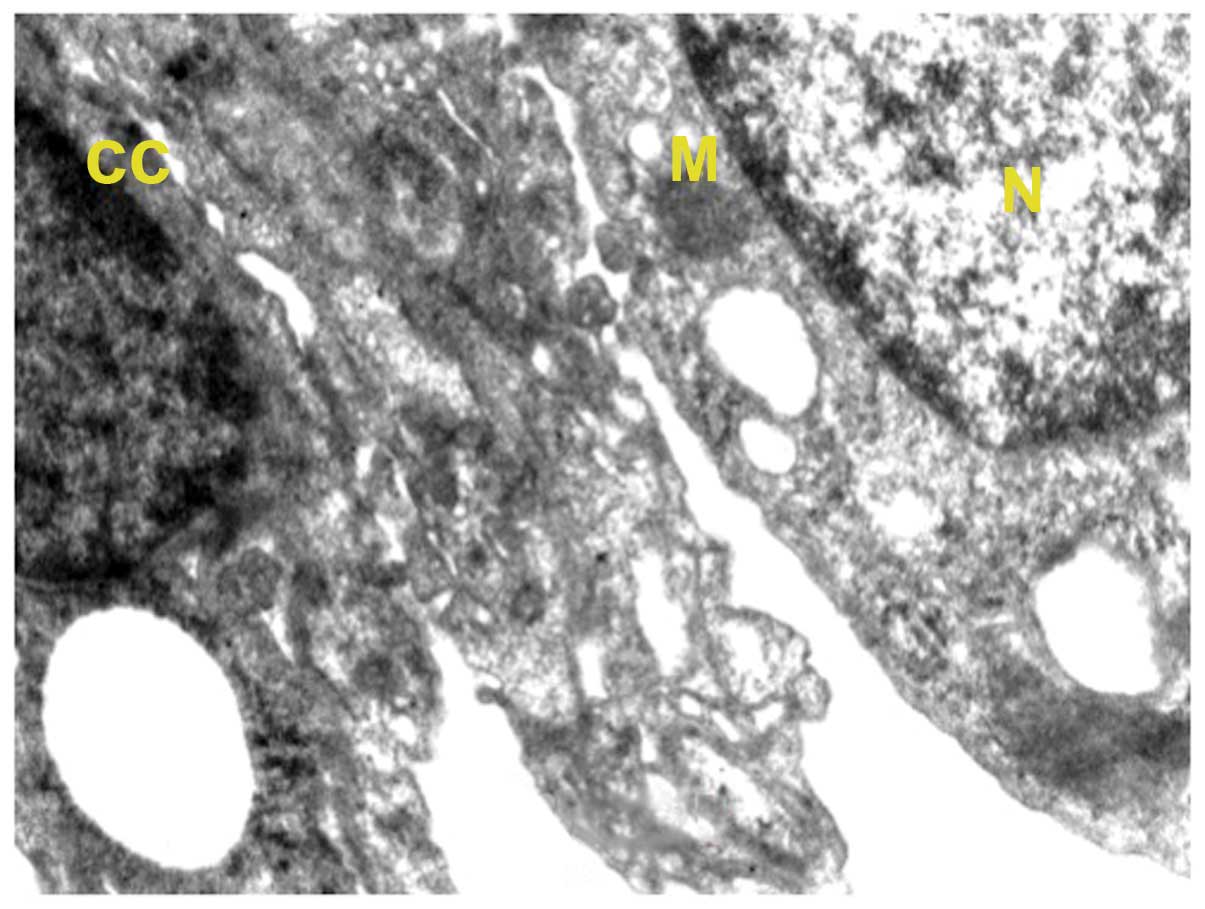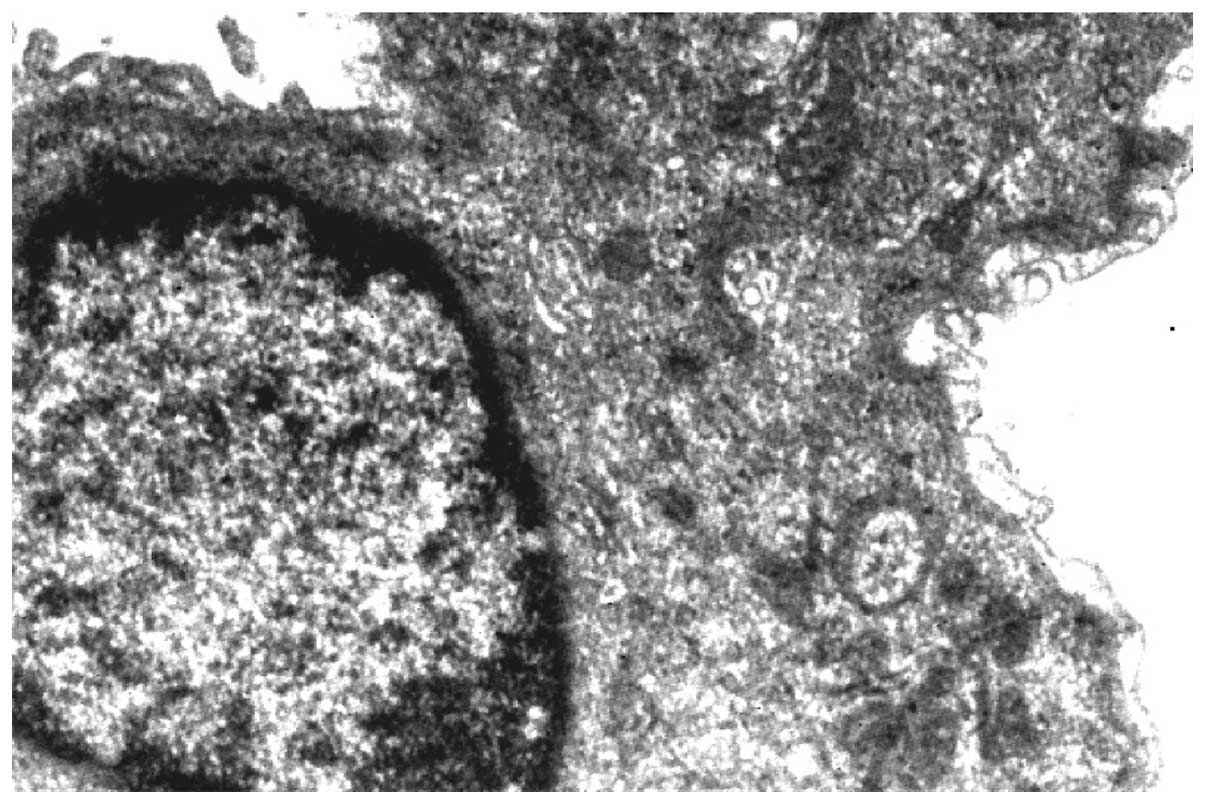Ultrastructural changes during lung carcinogenesis-modulation by curcumin and quercetin
- Authors:
- Published online on: October 13, 2016 https://doi.org/10.3892/ol.2016.5259
- Pages: 4357-4360
-
Copyright: © Wang et al. This is an open access article distributed under the terms of Creative Commons Attribution License.
Metrics:
Total
Views: 0 (Spandidos Publications: | PMC Statistics:
)
Total PDF Downloads: 0 (Spandidos Publications: | PMC Statistics:
)
Abstract
The aim of the present study was to examine the effectiveness of curcumin and quercetin in modulating ultrastructural changes during lung carcinogenesis. A total of 24 male laka mice were divided into the normal control, benzo[a]pyrene (BP)‑treated, BP+curcumin‑treated, BP+quercetin‑ treated, and BP+curcumin+quercetin‑treated groups (n=6 per group). Lung carcinogenesis was induced by a single intraperitoneal injection of BP [100 mg/kg of body weight (b.wt.)]. Curcumin was supplemented to mice at a dose level of 60 mg/kg of b.wt. in drinking water and quercetin was given at a dose level of 40 mg/kg of b.wt. in drinking water. The ultrastructure of BP‑treated mice revealed disruptions in cellular integrity together with nuclear deformation and premature mitochondrial aging. Notably, supplementation with phytochemicals individually resulted in improvement of the ultra‑histoarchitecture of BP‑treated mice although the improvement was much greater with combined supplementation of phytochemicals. Furthermore, BP treatment revealed alterations in lung histoarchitecture, which, however, were improved appreciably following combined supplementation with curcumin and quercetin. The results of the present study show that, combined supplementation with curcumin and quercetin effectively preserved the histoarchitecture as well as ultra‑histoarchitecture during BP‑induced lung carcinogenesis in mice.















